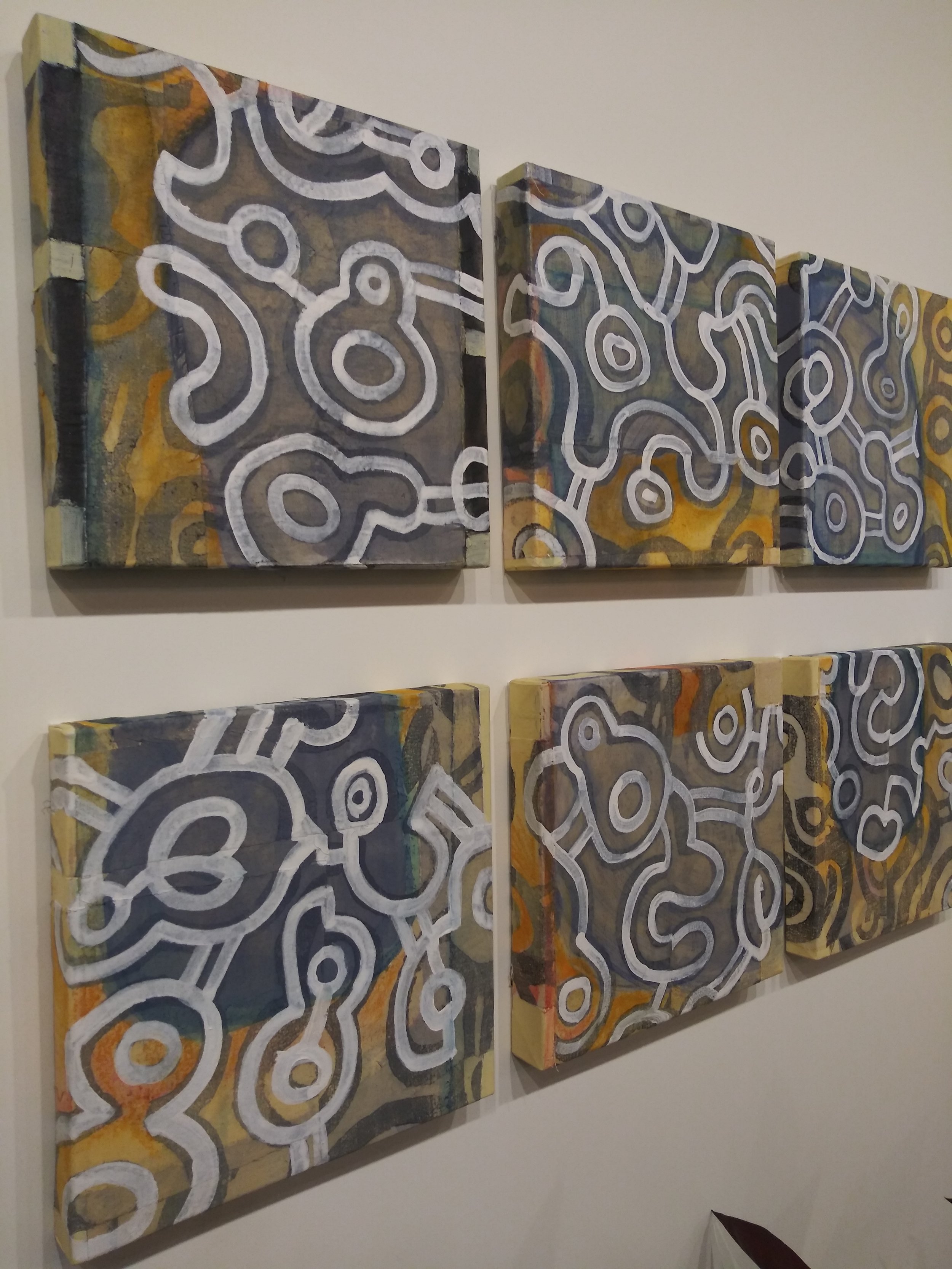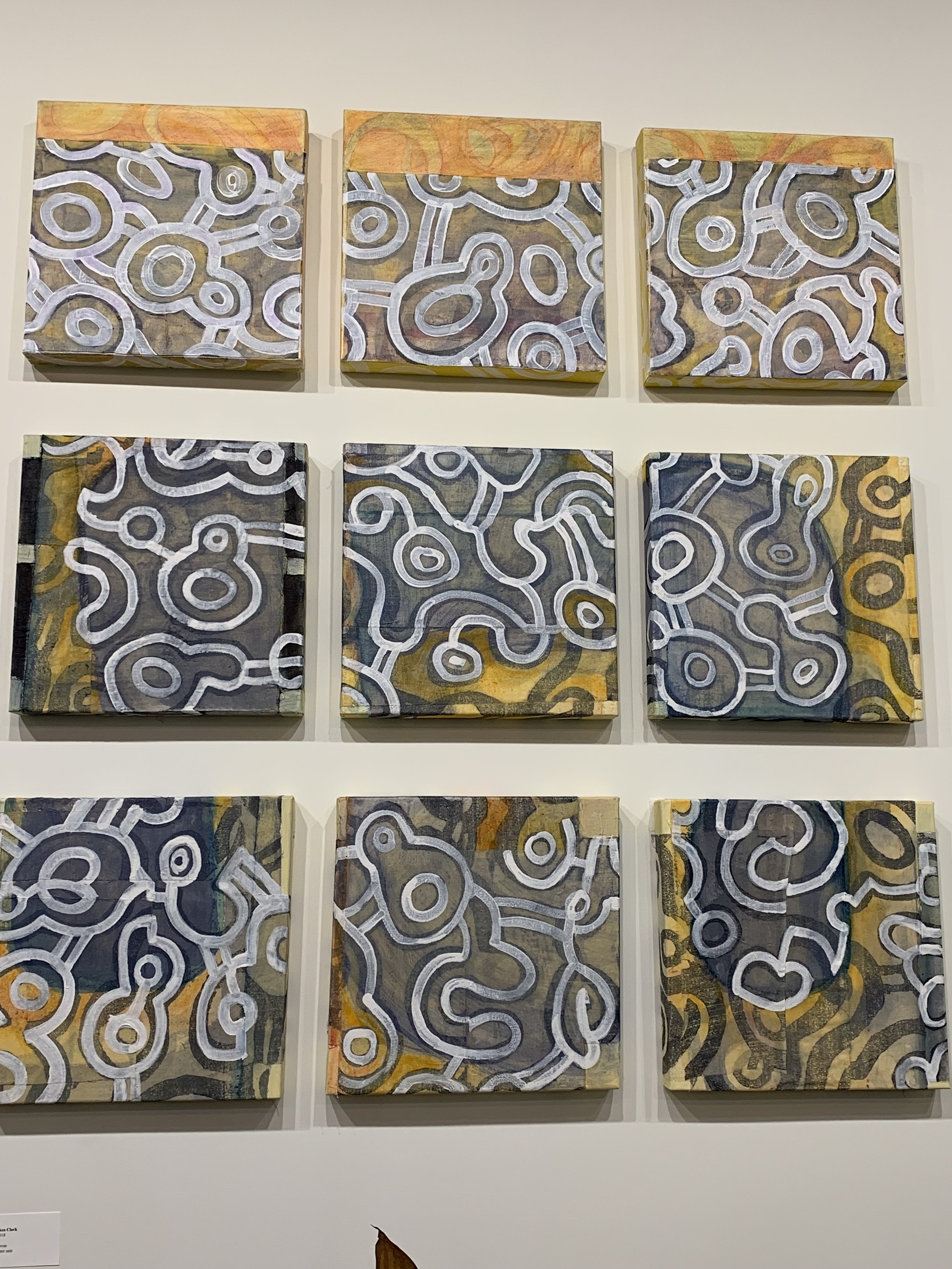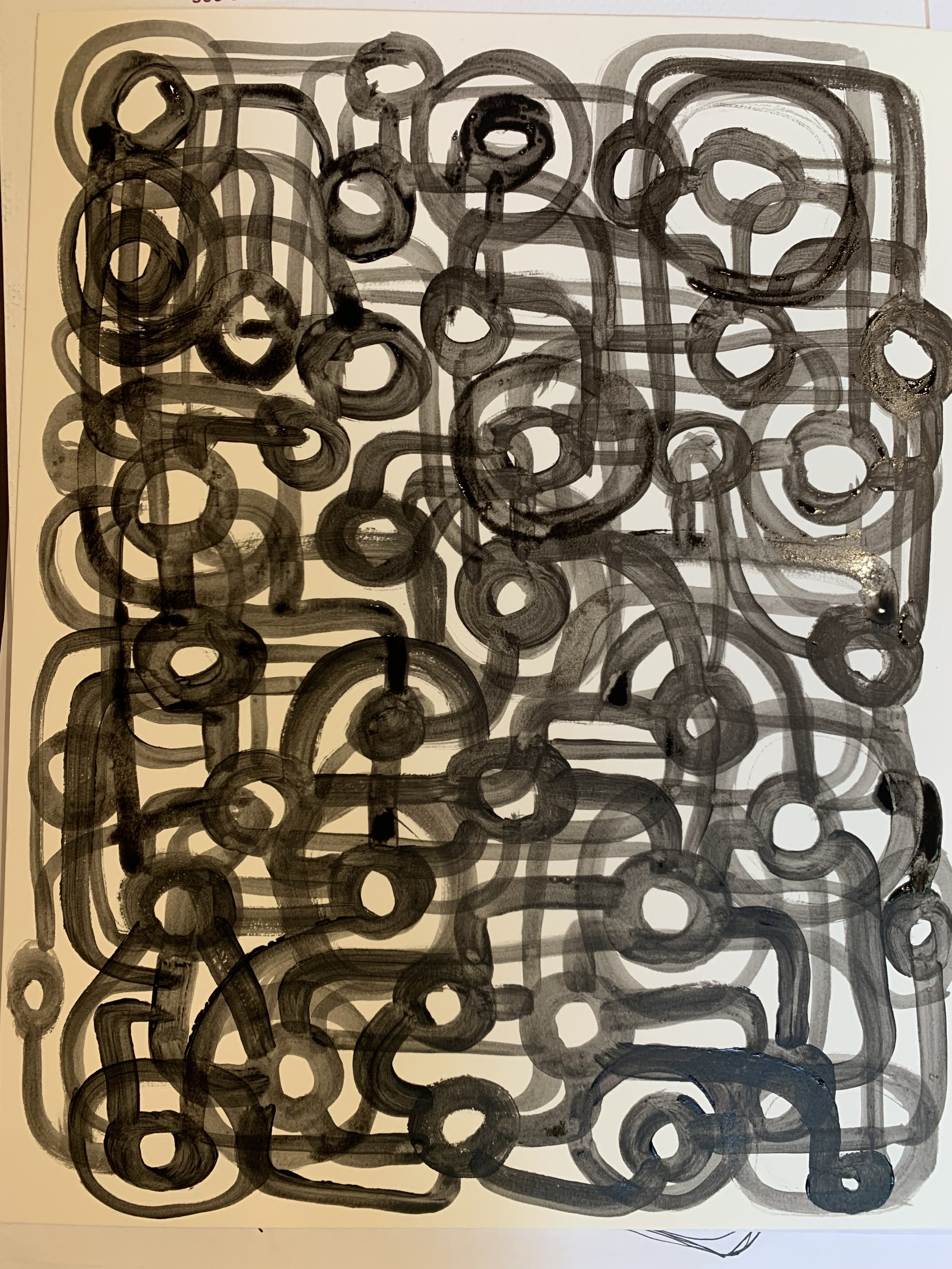PILINA
Private Collection
Size: 12” x 12”, Series of 10
Medium: Acrylic on Canvas, series
2018
Pilina explores the deep relationality that underpins Hawaiian ways of knowing — a visual meditation on the concept of lōkahi (harmony, unity) and the lived practice of aloha. In this work, layered forms and rhythmic lines evoke the interconnectedness of people, land, ocean, and spirit. Each element exists in balance with the others — not as separate entities, but as parts of a continuous relationship.
The word pilina means connection, relationship, or association, and this painting reflects the understanding that identity is not individual but collective, always shaped through mutual care, responsibility, and the unseen threads that bind us across generations and place.
Created in 2018, Pilina stands as a visual offering — a reminder that unity is not uniformity, but a respectful balance between all living things.
THE PROCESS
Pilina was created through a layered process that merges traditional Polynesian techniques for relief printing on tapa cloth with contemporary acrylic painting. By combining these methods, Herman Piʻikea Clark explores the dynamic space between customary practice and modern expression—bringing ancestral processes into conversation with present-day materials. The relief printing technique draws upon the methods historically used in the decoration of kapa or tapa, where carved wooden boards imprint rhythmic, symbolic forms onto cloth. In Pilina, this approach becomes both visual and conceptual groundwork—anchoring the piece in cultural memory and genealogical connection. Over these imprinted foundations, Clark applied layers of acrylic paint, using translucent washes and gestural linework to build depth and movement. The interplay between printed pattern and painted surface creates a visual language of relationship—pilina—expressing the entangled, layered, and enduring connections between people, places, and generations. This hybrid process reflects Clark’s broader practice of Indigenous abstraction, where innovation emerges through respect for tradition. Pilina becomes not only a visual statement, but a tactile and temporal act of cultural continuity.






